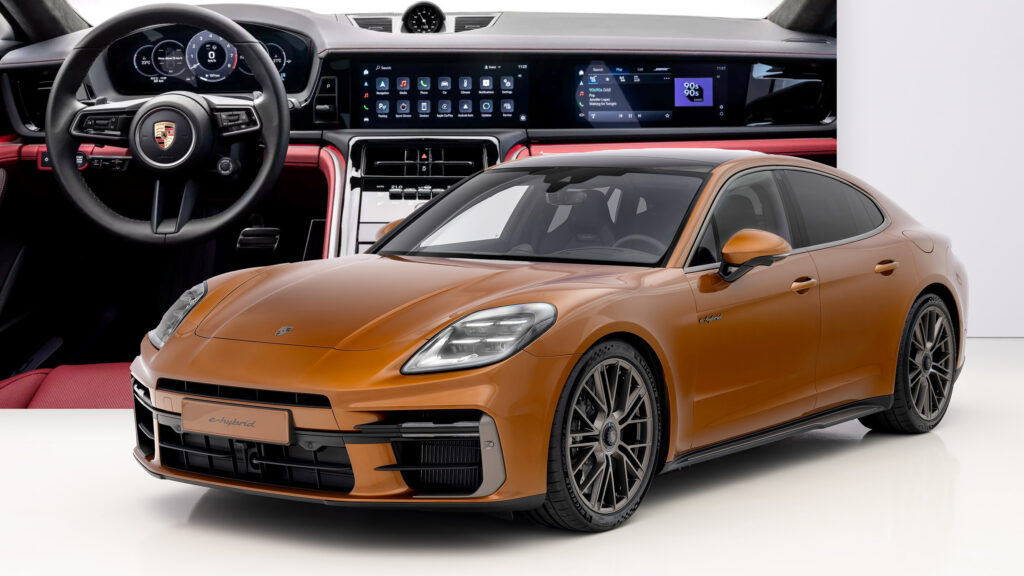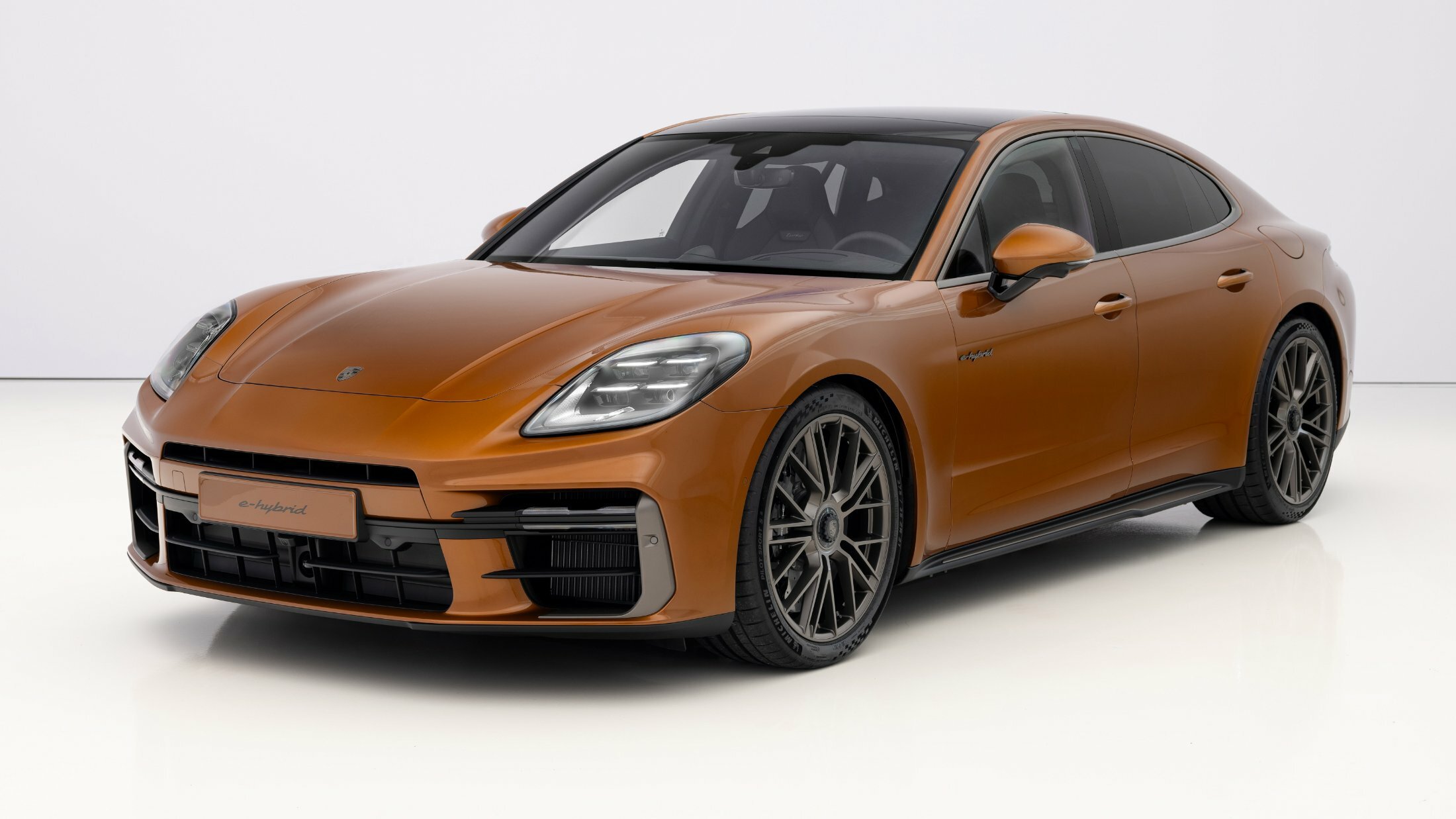Porsche has dropped the curtain on the all-new third generation of the Panamera introducing a refreshed exterior and interior alongside an expanded range of E-Hybrid powertrains and a cutting-edge active air suspension system.
While retaining the familiar silhouette of the outgoing model, the new Panamera showcases notable visual changes, especially in its distinctive ‘duckface’ front-end design. Simultaneously, it enhances its technological profile, bringing it closer to the EV-exclusive Taycan in terms of features and performance.
Design: It looks like a facelift, but it’s really new
The first generation of the controversially styled Panamera was introduced in 2009 and received a facelift in 2013, while the admittedly more stylish second iteration arrived in 2016 and was updated in 2020. For the third-gen model, Porsche designers followed their signature evolutionary approach, akin to the mechanically related Cayenne. As a result, the low-slung flagship appears like a comprehensive facelift of its predecessor, even though all of the exterior panels have been redesigned.
More: Undisguised Porsche Taycan Facelift Shows Off Newly-Chiselled Cheekbones
The most significant changes in the 2024 Panamera are evident in the front end. The larger central intakes now resemble a grille, and the standard LED Matrix headlights feature a new shape that complements the bulged fenders. While the overall profile remains familiar, notable improvements include better integration of the side gills with the front fenders, a slightly more angular greenhouse, and frameless rear windows.
Porsche has introduced new colors and wheel designs, including optional 21-inch center-locking rims that evoke the spirit of the 911 GT3. At the rear, the Panamera maintains its sloping roofline and the two-stage opening mechanism for the retractable spoiler. However, the full-width LED taillights are now much slimmer, and in combination with the sculpted rear bumper, they give the Panamera the appearance of a family-friendly 911 ST.
To further distinguish the Turbo E-Hybrid from its less powerful counterparts, Porsche has endowed it with distinctive bumper intakes, a body-colored diffuser, and dark bronze tailpipes. The front blades, window frames, and Turbo lettering on the tailgate are finished in the new Turbonite shade, contrasting the Madeira Gold Metallic showcased in the presentation car.
In terms of dimensions, the new Panamera measures 198.9 inches (5,052 mm) in length, 76.3 inches (1,938 mm) in width, and 56 inches (1,422 mm) in height. These figures remain largely unchanged from the previous generation, except for a minor increase in length by 0.1 inch (3 mm).
Interior: More digital than ever
Inside, the highlight is the Taycan-inspired triple-screen layout. An optional 10.9-inch display for the front passenger joins the 12.6-inch curved digital instrument cluster and the central infotainment touchscreen. Another thing you’ll notice is the lack of a gear lever on the center console that allows more room for storage and (supposedly) reduces clutter. Instead, drivers will now get a mannetino-style selector on the steering wheel, though we’re not convinced that this change is something that everyone will appreciate.
A cooled smartphone compartment with inductive charging is included in the standard kit, while the climate controls and air vents have been redesigned. In terms of safety, the optional Porsche InnoDrive has been enhanced, offering a higher level of autonomy, alongside the Remote ParkAssist which can be operated via the owner’s smartphone.
Powertrains: Four electrified options and a refined V6 turbo
The high demand for electrified models has driven Porsche to expand the Panamera lineup to include a total of four E-Hybrid powertrains. All of them are reported to offer increased power outputs, improved efficiency, and greater range figures compared to the outgoing model. Unfortunately, Porsche has only provided detailed information about one of the four electrified models – the Turbo E-Hybrid – with the rest to be unveiled later.
The 2024 Panamera Turbo E-Hybrid is equipped with a ‘revamped’ twin-turbo 4.0-liter V8 engine paired to a single electric motor integrated into the updated 8-speed dual-clutch PDK gearbox, and a larger 25.9 kWh battery pack. Porsche states that the use of a single casing for the gearbox and the electric motor shaves off 5 kg (11 lbs) in weight, while its integration into the oil circulation system enhances thermal efficiency and enables a higher output of 187 hp (140 kW / 190 PS). Consequently, the combined output of the hybrid system reaches 670 hp (500 kW / 680 PS), enabling the 0-60 mph (0-96 km/h) sprint in just 3 seconds and a top speed of 195 mph (314 km/h).
It goes without saying that Porsche will almost certainly unveil a more powerful electrified version of the Panamera in the future, similar to the Cayenne Turbo S E-Hybrid, which boasts an impressive 729 hp (544 kW/739 PS). Meanwhile, the other two E-Hybrids are expected to offer lower power outputs and more affordable options.
More: Porsche Reveals Its Goldilocks Hybrid SUV, The 512 HP 2024 Cayenne S E-Hybrid
In the case of the non-electrified options, the entry-level Panamera and Panamera 4 now feature an improved version of the turbocharged 2.9-liter V6 engine. This upgraded engine benefits from optimizations in boost pressure, injection volume, and ignition timing, resulting in an output of 348 hp (260 kW / 353 PS) and 368 lb-ft (499 Nm) of torque. These improvements represent an increase of 23 hp (17 kW / 23 PS) and 37 lb-ft (50 Nm) compared to the previous unit. As expected, the power boost positively affects straight-line performance, with the Panamera (RWD) achieving a 0-60 mph (0-96 km/h) sprint in 5 seconds, while the Panamera 4 (AWD) does the same in 4.7 seconds.
New tricks: A sophisticated active suspension
Porsche takes great pride in its new optional ‘Porsche Active Ride’ suspension, available in the Panamera E-Hybrid models. This innovative system includes new active shock absorbers, an electrically operated hydraulic pump, and a one-chamber air suspension that keeps the vehicle consistently level while efficiently absorbing road imperfections. The company claims that this new setup offers a wider range between comfort and driving dynamics. The Active Ride system also automatically adjusts the ground clearance based on the driving circumstances, with the ‘comfort access’ function raising the vehicle by 5.5 cm (2.2 inches) for easier ingress and egress, similar to SUVs.
Finally, the automaker didn’t neglect the standard two-chamber, two-valve air suspension, which is now claimed to be more comfortable and faster responding.
Pricing: Starts at just under $100,000
The 2024 Porsche Panamera is now available for order, with prices starting at $99,900 for the base model and $106,900 for the Panamera 4, excluding a $1,650 delivery processing and handling fee. Production will take place at Porsche’s Leipzig plant in Germany, and the first units are expected to arrive at US dealerships in spring 2024. Pricing and availability details for the flagship 2024 Porsche Panamera Turbo E-Hybrid will be announced at a later date.

















































